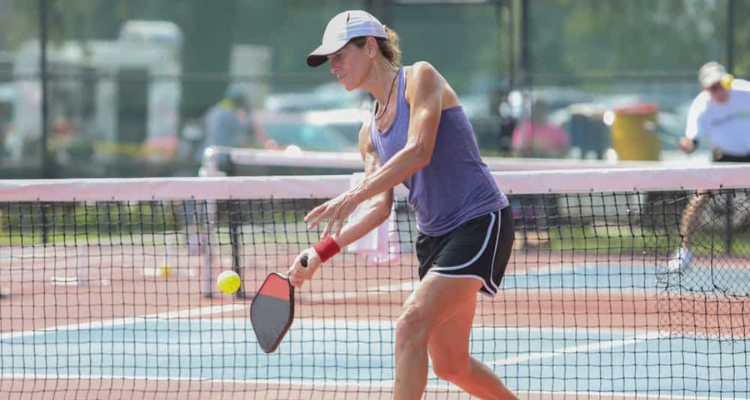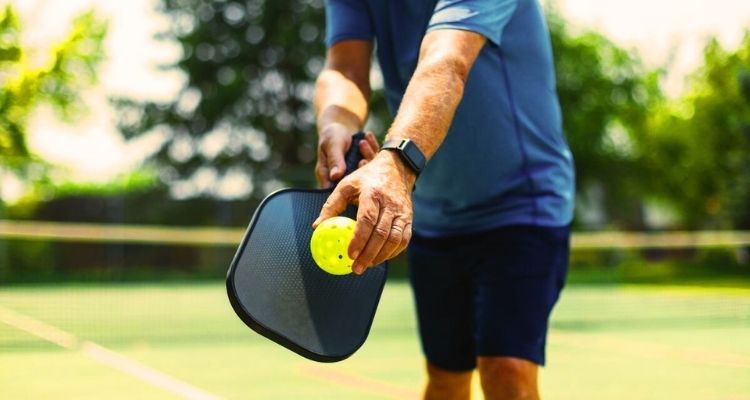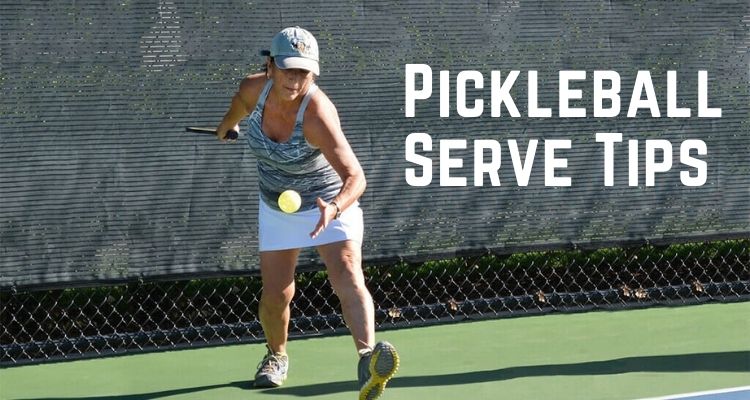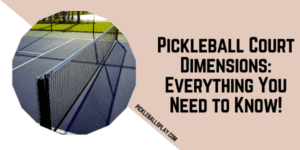Uncover the secrets of Type of Serve in Pickleball! This guide delves into the art of serving in pickleball, explaining various techniques and strategies. Whether you’re a novice or a seasoned player, discover the optimal serves to elevate your game. Ace your skills with this comprehensive insight into pickleball serving.
Type of Serve in Pickleball: The Underhand Serve
The most common type of serve in pickleball is the underhand serve. As its name implies, this serve requires the player to hold the paddle below waist level and strike the ball in an upward motion to send it diagonally across the net to the opponent’s service court.

The underhand serve has a few key advantages that make it popular in pickleball:
- It is easy to control and can reliably be hit within the confines of the service court. This consistency is important, as any serve landing outside of the service court results in a fault.
- It usually has a backspin, causing the ball to bounce lower on the opponent’s side. This can make it harder for them to attack the return.
- Because it is struck from below waist height, there is less space and power generated compared to an overhand stroke. This can allow beginners to sustain rallies more easily.
However, the gentle arc of the underhand serve also makes it more attackable if not placed precisely. Overall, it is generally considered the standard starting point for new players learning the game.
Type of Serve in Pickleball: The Overhand Serve
As players advance in skill level in pickleball, they may choose to incorporate overhand serves instead of strictly underhand. The overhand serve is similar to a tennis serve – the paddle is brought above the shoulder during the backswing and swung with full extension to strike the ball in a high-to-low motion across the net.

The benefits of the overhand serve compared to underhand include:
- More power and pace on the serve, putting immediate pressure on the opponent.
- A flatter trajectory that drops sharply down into the service court. This angle can be difficult to return effectively.
- Ability to aim for the edges and corners of the service court with sliced or kicking serves. Well-placed overhand serves can ace opponents outright.
The tradeoffs are reduced control compared to underhand serves, higher likelihood of faults, and increased physical exertion needing stamina. Overall, the overhand serve transforms the server into more of an offensive weapon, enabling fast starts to points.
Type of Serve in Pickleball: The Sidearm Serve
In between the underhand and overhand serves is the sidearm pickleball serve. As the name suggests, the paddle is swung from the side of the body in a flat motion parallel to the net posts.

Sidearm serves to combine attributes from both underhand and overhand serves:
- More power and difficulty to return compared to underhand serves.
- More control over placement in the service court compared to overhand serves.
The sidearm serve can be especially effective with spin. A sliced sidearm serve curves away from opponents, while sidespin and topspin variants jump or skid after bouncing. Mixing up spin types can bewilder opponents’ returning serve.
FAQs
Which serve is easiest for beginners to learn in pickleball?
The underhand serve is the easiest serve for beginners in pickleball. It has a high degree of control and consistency, making it effective for starting points while new players focus on developing rallies.
Is the underhand serve legal in tournament pickleball?
Yes, the underhand serve is 100% legal in competitive pickleball, from amateur tournaments up to professional events. Many advanced players still utilize underhand serves situationally for their reliability.
Do you have to call out the score before serving in pickleball?
Yes, according to official pickleball rules, players should call out the score before serving to confirm with opponents. This is similar to protocols in sports like tennis.
Conclusion
Ultimately the type of serve selected in pickleball comes down to a player’s technical proficiency and strategic intentions. Underhand serves to provide consistency and control, overhand serves enable aggressive shots, and sidearm falls somewhere in between. Mastering a range of serves gives players more ways to vary the ball’s speed, spin, placement, and bounce – all important dimensions to achieving pickleball success. Knowing when to apply the right type of serve and continually improving serving skills are key parts of development in this fast-growing paddle sport.




